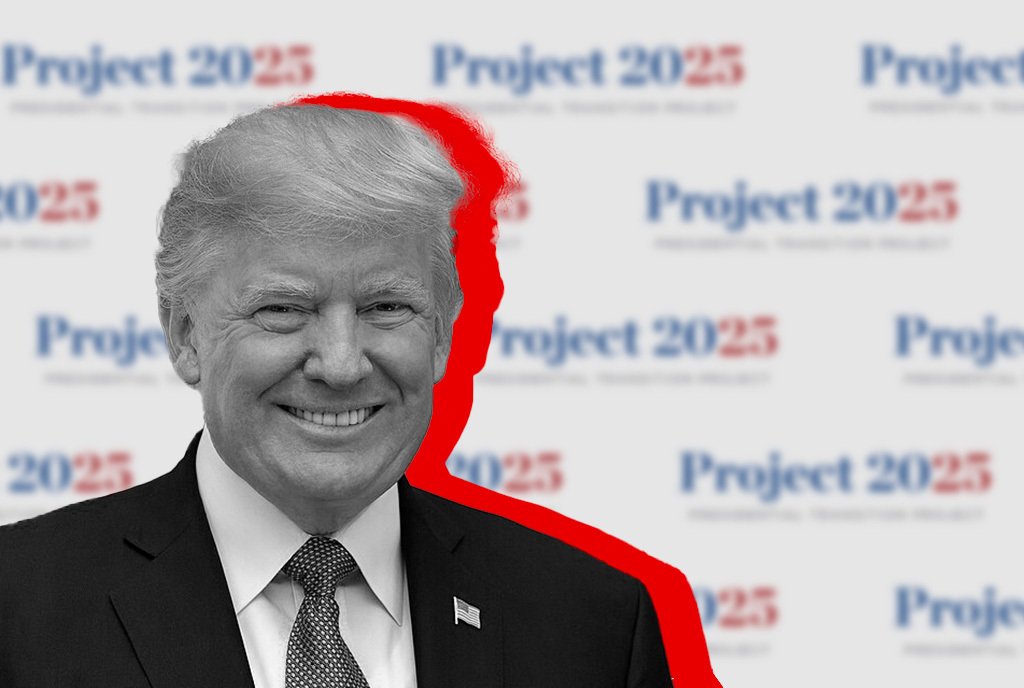
On Tuesday, news outlets across the United States reported that Paul Dans, the director of Project 2025, a controversial conservative agenda policy plan unveiled this year by the Heritage Foundation, was stepping down.
Project 2025 is much more than a document: it is a machine.
The announcement came amid attempts by former president Donald Trump and his campaign to distance himself from Project 2025. Trump’s presumptive opponent, Vice President Kamala Harris, has invoked it in recent days to blast the Trump agenda as ultraconservative and contrary to the values of most Americans.
From the headlines, a reader might have inferred that the director’s resignation signaled a retreat by the proponents of Project 2025.
But Project 2025—as a policy document, as a plan of action, and as a blueprint for a radical realignment of various aspects of American society—is not going anywhere as long as the prospects of a second Trump presidency remain alive.
That’s because Project 2025 is much more than a document: it is a machine, with many components, which remains very much operational. For example, in addition to outlining a radically conservative policy agenda and a plan for rapid implementation, the project also includes a personnel database of more than 20,000 applicants—vetted for their allegiance to the project’s agenda—for political appointments should Trump be reelected. Project 2025 also represents significant resources, a reported $22 million, already invested by the project’s supporters, who include current and former Trump backers, allies, and staffers.
“Project 2025 is on the ballot because Donald Trump is on the ballot. This is his agenda, written by his allies, for Donald Trump to inflict on our country,” said Kamala Harris’s campaign manager Julie Chávez Rodríguez in a statement. “Hiding the 920-page blueprint from the American people doesn’t make it less real.”
Experts agree that Trump’s attempts to distance himself politically from Project 2025 do not mean he and his administration won’t embrace the plan should Trump take office again.
“Project 2025 is not going away,” said Colin Seeberger, senior advisor for communications at the progressive Center for American Progress’s Action Fund.
“Project 2025 is on the ballot because Donald Trump is on the ballot.”
On the contrary, said Seeberger, Project 2025 has been and remains a plan inextricably linked to Trump and his presidential campaign, whatever Trump himself says about it. Mr. Dans’s resignation—intended to create the illusion of distance, Seeberger emphasized—actually illustrates how close the Trump campaign and Project 2025 really are.
“This is a resignation that is coming point blank at the direction of the Trump campaign’s senior strategist.”
A Conservative Blueprint
So, what, exactly, is Project 2025?
Project 2025 is, in part, a nearly 1,000-page document that outlines policy recommendations for the next presidential administration that experts have labeled “ultraconservative.”
While not an official part of the Trump campaign’s agenda, politicians and political analysts widely view it as a blueprint for executing these recommendations should Trump take office in January.
The wide-ranging policies put forward in Project 2025 include:
- A drastic reduction in the size and scope of government, including proposed or implied cuts to regulatory agencies responsible for protecting Americans’ safety, health, and wellbeing, like the EPA, Consumer Financial Protection Bureau, Occupational Safety and Health Administration, and the Federal Communications Commission
- Cuts to social programs like Medicaid, Medicare, food assistance, Social Security, and public education writ large
- Regulations or laws targeting diversity, equity, and inclusion programs in the private sector
- A wide swath of policies impacting families, including policies that prioritize “the protection of life from conception,” restrict access to gender-affirming healthcare, and restrict the discussion or teaching of gender identity issues in schools
But Project 2025 is more than a list of policy proposals. It represents the culmination of decades of organizing by ultraconservative interests, and, despite Trump’s attempt to distance himself from it, has deep ties to the former president. As Vox senior political correspondent Andrew Prokop recently reported:
[Project 2025] is not a pie-in-the-sky policy agenda full of bold but empty promises. It is crafted to be a list of things the next president’s appointees really can do, put together by many people who served in top posts under Trump last time and could well do so again. (Project 2025 is also collecting a database of names of conservatives who could take jobs in Trump’s second term.)
Sign up for our free newsletters
Subscribe to NPQ's newsletters to have our top stories delivered directly to your inbox.
By signing up, you agree to our privacy policy and terms of use, and to receive messages from NPQ and our partners.
The Resignation
Dans’s resignation was announced amid a backlash by Trump and his campaign, who have attempted to distance Trump from Project 2025 as it has come into increasing focus and criticism, including by vice president and presumptive Democratic presidential nominee Kamala Harris.
“I have no idea who is behind it,” Trump said on Truth Social, the social media network he owns. “I disagree with some of the things they’re saying and some of the things they’re saying are absolutely ridiculous and abysmal. Anything they do, I wish them luck, but I have nothing to do with them.”
Deep Ties to Trump
But what should we make of the former president’s statements distancing himself from Project 2025?
“Project 2025 is also a personnel recruitment program for MAGA loyalists.”
It’s unclear whether the resignation itself indicates significant change. First, Dans’s role is going to be filled, according to the Washington Post, by Heritage Foundation president Kevin Roberts. Additionally, as the Post reported, Project 2025 has essentially accomplished its near-term goals:
Project 2025…always planned to wind down the policy program and hand off recommendations to the official presidential transition.…Another arm of the project, a personnel database of more than 20,000 applicants for potential political appointments should Trump be reelected, will remain in operation.
New York Times reporter Jonathan Swan echoed this assessment on X:
Project 2025 has become inconvenient for the Trump campaign but it has produced nearly all the policy it was ever going to & owns the central personnel database in the conservative movement. Trump doesn’t yet have a functioning transition team & will likely need its resources.
Indeed, the ties between Trump and his campaign and Project 2025 are deep.
“Many of the people who were authors of Project 2025 formerly served in the Trump administration, and so they are well positioned to be reappointed if he is reelected,” noted Seeberger, who also pointed out the salience of the project’s personnel database.
“Project 2025 is also a personnel recruitment program for MAGA loyalists who will put a potential president Trump’s interest over the public interest,” said Seeberger.
But one need not look even that far to see the alignment between Trump, the candidate, and Project 2025: Trump has already advanced, or tried to advance, many of the policy agendas laid out in the document.
“Project 2025 proposes to gut our system of checks and balances by firing up to 50,000 civil servants and replacing them with MAGA loyalists,” said Seeberger. “Well, that’s something that Donald Trump has repeatedly talked about.”
Indeed, in 2020, then-president Trump issued an executive order that would have removed protections for civil servants perceived as disloyal—a move straight out of the Project 2025 playbook.
Whether or not Project 2025, or at least aspects of it, will see actual implementation in the future depends largely on who is elected the next US president. But, as a living agenda, the ideas the project embodies are sure to live on, regardless of the election’s outcome. If the recent resignation signals anything, it would seem to be that Project 2025’s proponents are seeking to hide from the limelight—for now.











